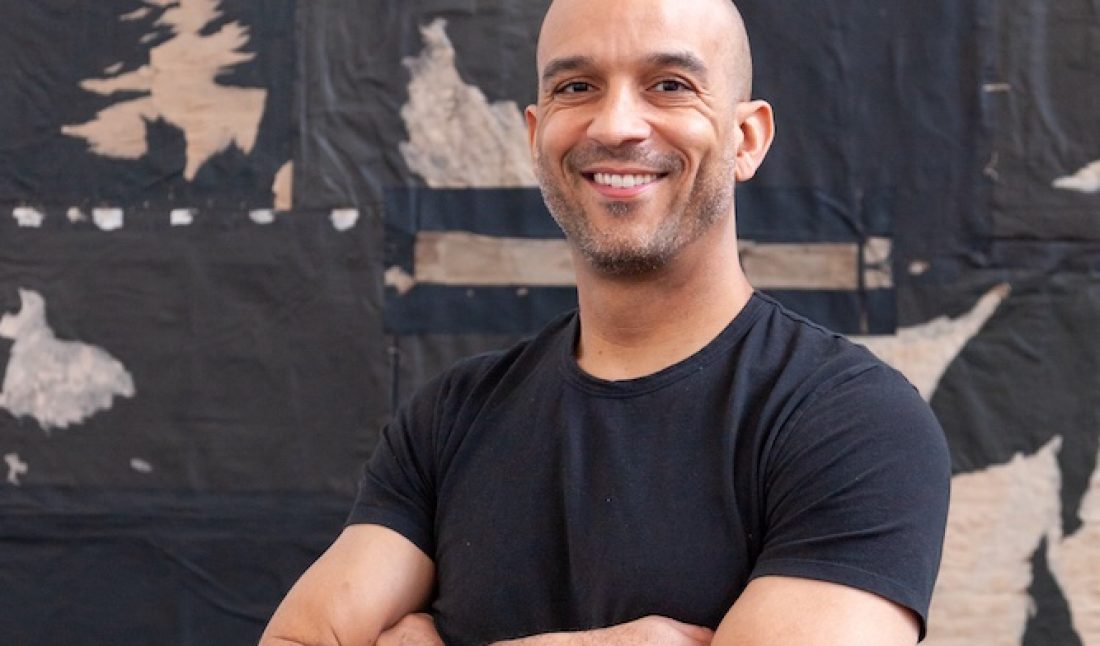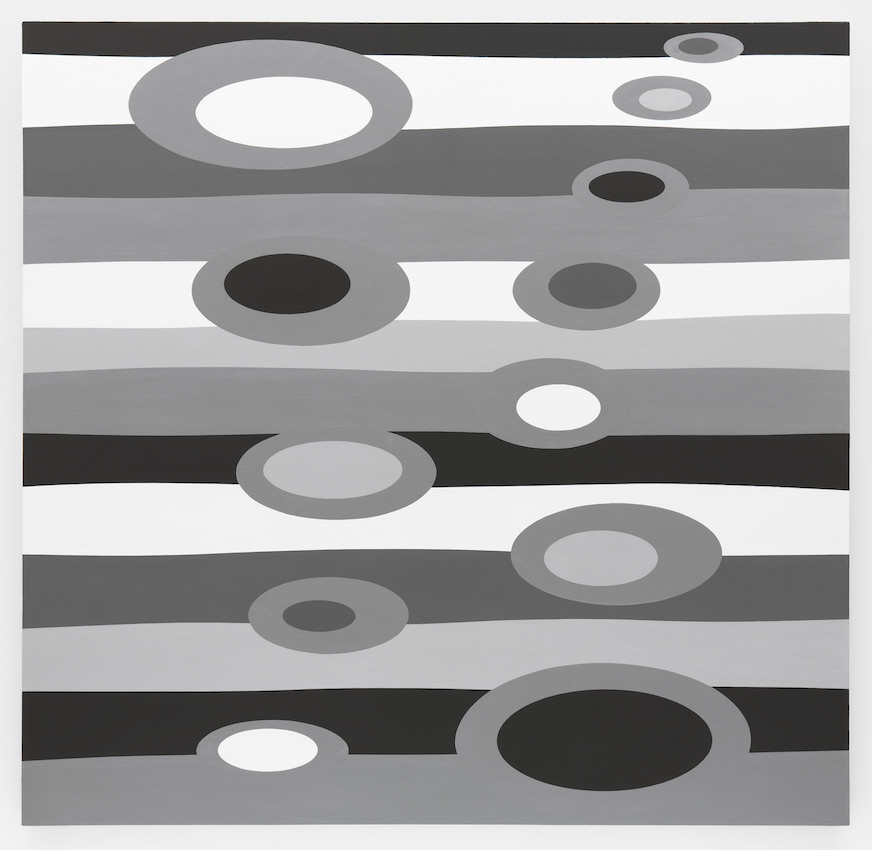Samuel Levi Jones Transforms the Material of Texts to Challenge Dominant Systems
Samuel Levi Jones’s exhibition “Conscious Intuition” was on view at Galerie Lelong & Co. in New York last May and June. It featured new works created from deconstructed encyclopedias, law books, and medical textbooks, alongside a large-scale piece of the artist’s from 2012. That work, 48 Portraits (Underexposed), was inspired by Gerhard Richter’s 1972 piece of the same name. While Richter portrayed 48 white male figures featured in the 1972 Encyclopedia Britannica, Jones chose 24 Black women and 24 Black men, all of whom were left out of that same edition, despite their worthy achievements and profiles. The piece marked the first time Jones worked from deconstructed books, pulping their pages, and the beginnings of a method that is now at the heart of his practice.
Visitors to the show were let in on the evolution of Jones’s material process. But it is not just about the deconstruction and rebuilding of the physical material, but, rather, the idea of what it means to engage with books about history, medicine, or law. These are items of great authority, and yet it’s important to investigate what they lack, what they leave out. They raise the question, and further digging into, what has been omitted? Erased? Who do we not see? And why?
Challenging the authority of text is also centered in the show’s immersive installation The Library of Alexandria (2023), made from nearly bare bookshelves, created during the artist’s residency at Dieu Donné. It’s about “a desire to create a space where information, that encompasses all, coexists, without fear, so that the pendulum stops its violent swing from one extreme perspective and back again,” the artist states in a release for the show.
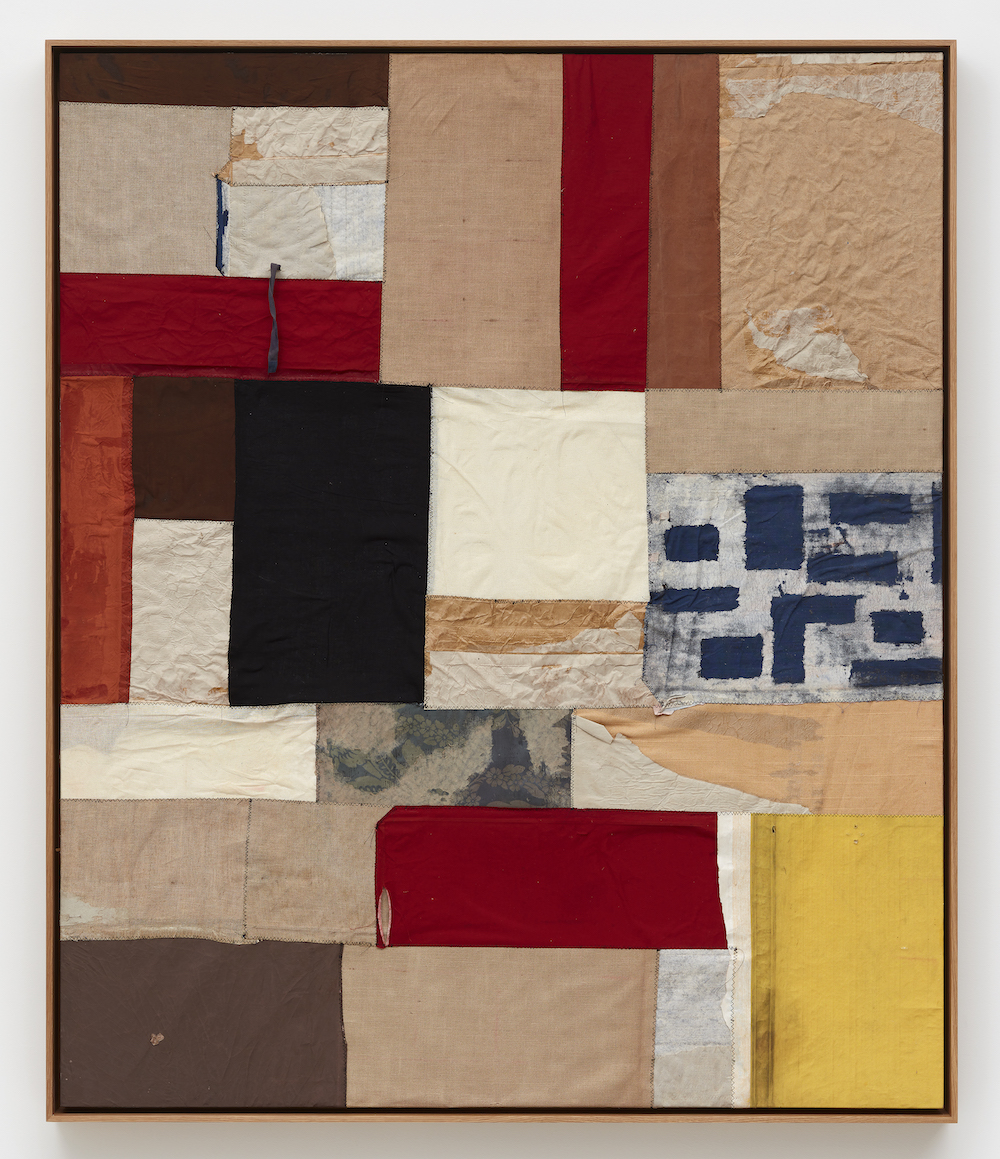 Samuel Levi Jones, “I’m horrible at chasing,” 2022, deconstructed print portfolios on canvas, 60 x 50 inches, © Samuel Levi Jones, courtesy of Galerie Lelong & Co.
Samuel Levi Jones, “I’m horrible at chasing,” 2022, deconstructed print portfolios on canvas, 60 x 50 inches, © Samuel Levi Jones, courtesy of Galerie Lelong & Co.
Samuel Levi Jones Uses Books as Both Source and Media for his Art
In Jones’s new works, we see his signature sewn book covers underneath, partially obscured by black squares and rectangles made from pulped book covers. There’s a questioning here of his process up until now, a challenge of seeing how far the material can be pushed. Jones shared with Whitewall how this new approach furthers his interrogations of the systems of power in our world, revealing the ways in which we’re made to not see what’s going on around us.
Whitewall spoke with Jones, whose solo show at Galerie Lelong & Co. in Paris is on view from October 12 to November 18, about breaking down the substance of authoritative systems to reimagine them.
WHITEWALL: What was the starting point for this exhibition, “Conscious Intuition,” recently on view at Galerie Lelong & Co. in New York?
SAMUEL LEVI JONES: With all this pushback that’s going on these days with school curriculum and what should be taught within history, it’s about addressing these reference materials where histories and narratives are left out.
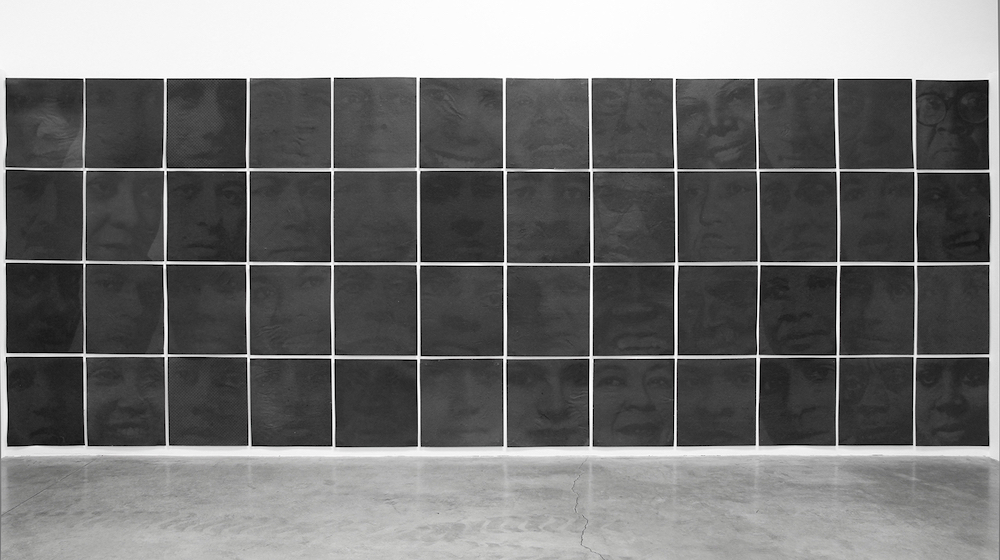 Samuel Levi Jones, “48 Portraits (Underexposed),” 2012, suite of 48 inkjet prints on recycled Encyclopedia Britannica paper, 24 1⁄2 x 22 inches, © Samuel Levi Jones, courtesy of Galerie Lelong & Co.
Samuel Levi Jones, “48 Portraits (Underexposed),” 2012, suite of 48 inkjet prints on recycled Encyclopedia Britannica paper, 24 1⁄2 x 22 inches, © Samuel Levi Jones, courtesy of Galerie Lelong & Co.
WW: Can you tell us about the inclusion of, 48 Portraits (Underexposed), which you made in 2012? It’s inspired by Gerhard Richter’s work of the same name depicting 48 white men from history, sourced from an encyclopedia, made in 1972.
SLJ: I showed that work in 2012 and haven’t shown it in New York, so I was really excited about showing it. When I learned that Richter’s source images were from the encyclopedia, I thought, “I need to get a set of encyclopedias to investigate.” I got a set of encyclopedias from a classmate of mine. Once I had those books, I was fumbling through trying to figure out what the aesthetic would be. I had five different versions of what the portrait was. What I have now is the fifth attempt. I recycled the pages from those books to make the sheets of paper to print the portraits on. After that, I continued deconstructing material and ultimately started working with book covers.
The portraits to me are very important because they are the beginning to what I am working with, working on now, what I’ve always worked on. But so many people don’t know about that work, so it’s nice to, after a decade, finally have an opportunity to show the work in a prominent space.
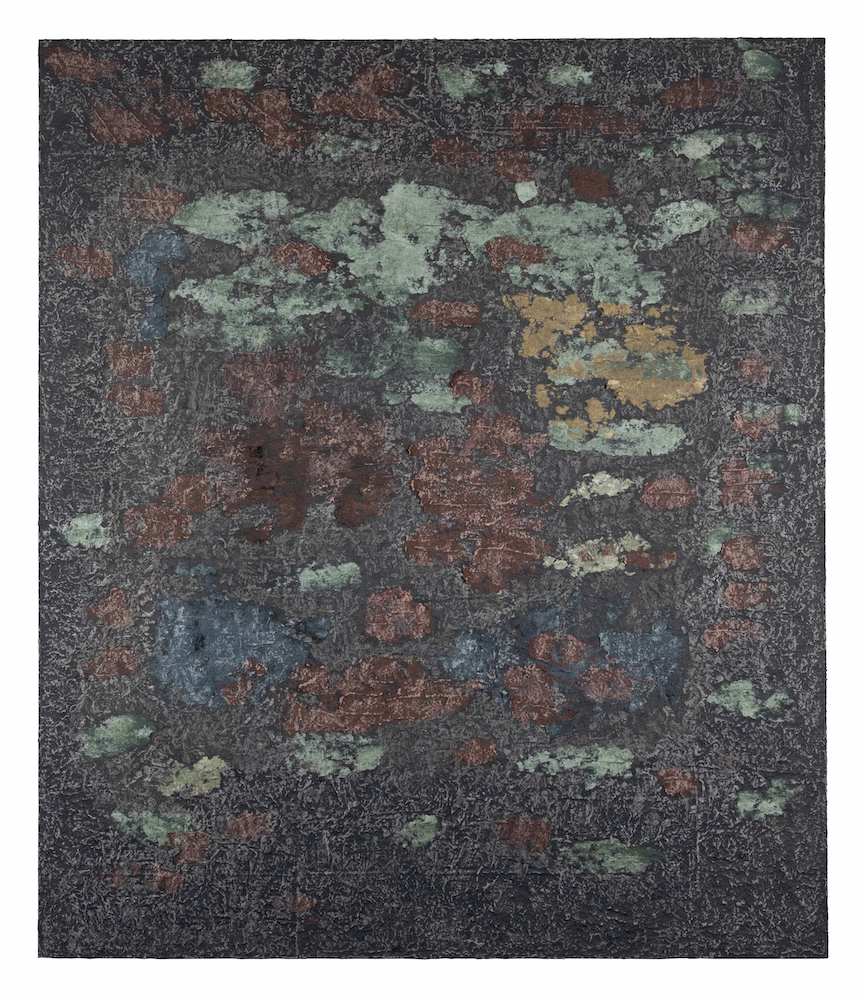 Samuel Levi Jones, “Multisensory,” 2023, deconstructed and pulped law book covers on canvas, 70 x 60 inches, © Samuel Levi Jones, courtesy of Galerie Lelong & Co.
Samuel Levi Jones, “Multisensory,” 2023, deconstructed and pulped law book covers on canvas, 70 x 60 inches, © Samuel Levi Jones, courtesy of Galerie Lelong & Co.
The Artist Interrogates Himself and His Process
WW: In the new work that was on view, how did it show an evolution in your process?
SLJ: They are made mostly from law books. There is a difference in the process. I haven’t been pulping the book covers for very long. In this show, I have some larger-scale works. In a lot of these works, I have my traditional work underneath where I’ve sewn together a completed piece, but I’ve covered that with either a black square or entirely with pulp, where there is very little of what’s underneath showing. They become fully unrecognizable as objects from books.
I’m questioning myself and my process. You think you have it figured out, or you think you know what it is, but really you have this ability to question that. It’s in the same way that I look outside of myself and see things—whether it be law enforcement or the judicial system and how it can be reimagined. I think about the ways in which people are sort of distracted to not notice what’s going on around us.
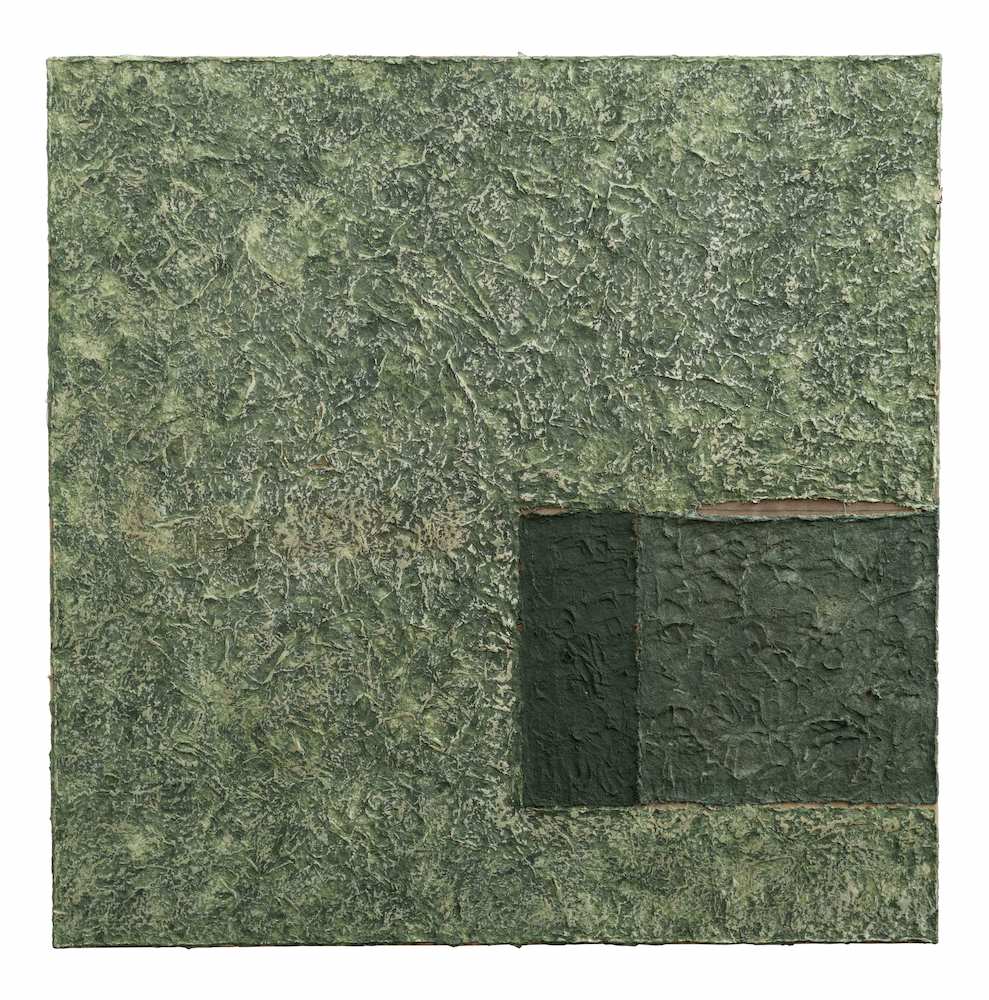 Samuel Levi Jones, “Fissure,” 2023, deconstructed and pulped history book and law book covers on canvas, 30 x 30 inches, © Samuel Levi Jones, courtesy of Galerie Lelong & Co.
Samuel Levi Jones, “Fissure,” 2023, deconstructed and pulped history book and law book covers on canvas, 30 x 30 inches, © Samuel Levi Jones, courtesy of Galerie Lelong & Co.
WW: What is it like to start covering up and sometimes fully obscuring the work that’s underneath, what had been, up until now, a finished piece?
SLJ: It honestly was difficult. Some looked good as they were! That’s the challenge, and it’s fun at the same time. It’s pushing myself and having a new discovery. What does it mean to take that leap of faith and risk something different whether it be a success or a failure? I like that. Working in a certain way all the time can be redundant and boring, and I have to keep it interesting first and foremost for myself to keep wanting to go back to the studio.
I really think about that in terms of making work that’s focused on particular ideas, whether they be political or social. For me, the work is an entryway into these difficult conversations, and about finding beauty within the madness of it. In a lot of ways, that has been the best part of the practice, having these conversations through these objects.
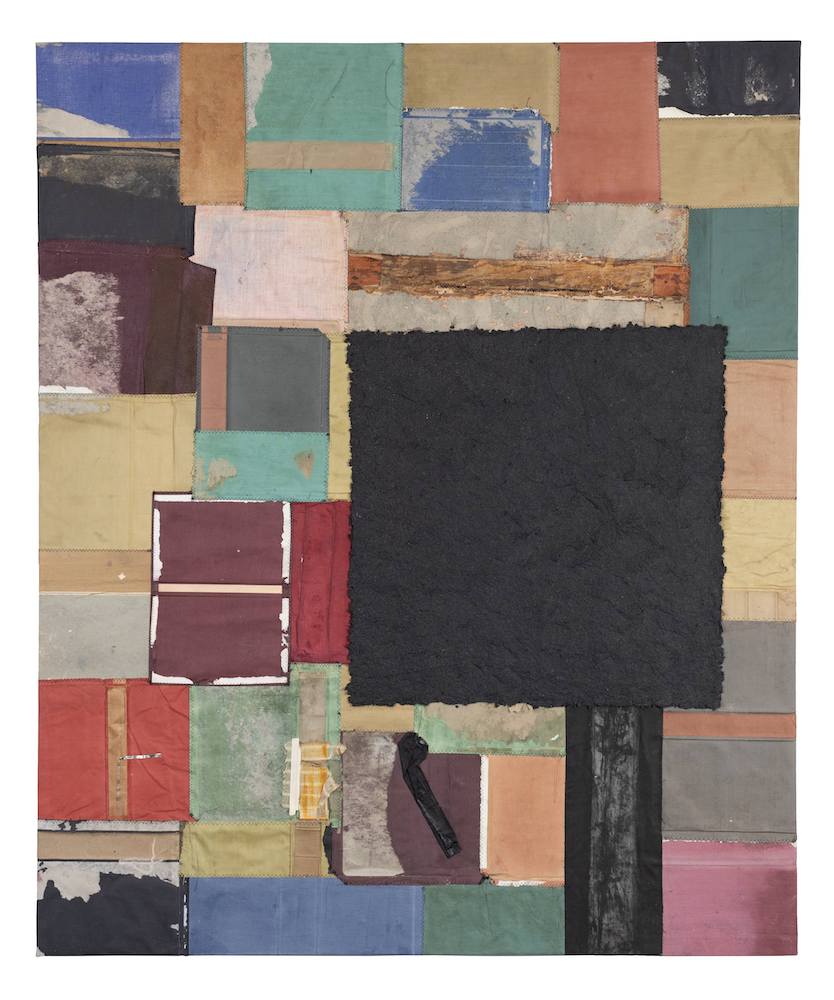 Samuel Levi Jones, “Snap Judgement,” 2022, deconstructed and Pulp law books, medical books and newspaper covers on Canvas, 60 x 50 inches, © Samuel Levi Jones, courtesy of Galerie Lelong & Co.
Samuel Levi Jones, “Snap Judgement,” 2022, deconstructed and Pulp law books, medical books and newspaper covers on Canvas, 60 x 50 inches, © Samuel Levi Jones, courtesy of Galerie Lelong & Co.
Samuel Levi Jones Works on Future Public Art
WW: You’ve also been working on a community project and public artwork in Marion, Indiana. Can you tell us about that?
SLJ: Yes, in my hometown. There’s a space there where a lynching happened in 1930, and we’re working on developing that into a community garden, to recognize this tragedy. It’s something that I’ve really wanted to work on. I know it’s going to have some challenges, but it’s important to address these things and talk about them—to talk about why we are where we are, and the way in which we have not dealt with these historical events.
I’m excited about getting outside of the white-walled space and doing things. I have these issues that my work address, but how do I get beyond making these objects and having the exchange of these objects within the confines of privileged spaces? To go beyond that and use my platform to do something more meaningful?
I think public artworks are important because they offer exposure; they are a way of discovery for people, particularly young people. And so I’m thinking about that as well, creating this thing that’s in a public space for a young person to discover that thing beyond the world that they exist in.






